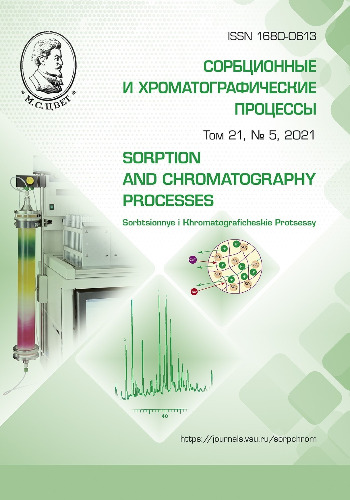Determination of the grape anthocyanins under reversed-phase HPLC conditions
Abstract
We developed a simple gradient separation option for all 3-glucosides and 3,5-diglucosides of the five main anthocyanidins (delphinidin, cyanidin, petunidin, peonidin, and malvidin) characterising anthocyanin biosynthesis in fruit of different grape varieties of Vitis vinifera species (first group) as well as in other grape varieties (North American or Far Eastern origin), and in their hybrids. For separation, we used HPLC with a Symmetry C18 stationary phase and the eluents of 10 vol.% formic acid and two different compositions of 6 vol.% and 20/30 vol.% acetonitrile in water. Interspecific hybrids are distinguished by the appearance of 3,5-diglucosides in their extracts in addition to 3-glucosides. Both 3-glucosides and 3,5-diglucosides can be separated easily under conditions of reversed-phase chromatography. The problem of separation arises only when they both appear in a sample, especially the pair of petunidin-3-glucoside and malvidin-3,5-diglucoside. In order to separate the above anthocyanins, we determined the enthalpies of the transfer of these anthocyanins from the mobile phase to the stationary phase. It was found experimentally that all sorption processes were exothermic. The transfer enthalpy was different for 3-glucosides and 3,5-diglucosides. It decreased in magnitude, when the glucoside radical was added to position 5. The difference in this parameter for petunidin-3-glucoside and malvidin-3,5-diglucoside makes it possible to change the selectivity of the analyte separation by increasing the separation temperature from 40 to 55оC. This allows testing grape varieties and wines for the markers of crossbreeding with non-Vitis vinifera species. In this study, we used a number of wines bought in a supermarket, made from Vitis vinifera Cabernet or Cabernet Sauvignon grapes. It was determined that there were no 3,5-diglucosides in the studied wines produced in Chile and France. This indicates the use of only Vitis vinifera grapes in their production. However, we found significant amounts of 3,5-diglucoside in all the wines produced in Russia, indicating the use of hybrid grape varieties (such as the Moldova variety, which is popular in Russia).
Downloads
References
Clifford M.N., Knight S., Kuhnert N., J. Agric. Food Chem., 2005, Vol. 53, pp. 3821-3832. https://doi.org/10.1021/jf050046h
Deineka V.I., Grigor'ev A.M., J. Anal. Chem., 2004, Vol. 59, pp. 270-274. https://link.springer.com/article/10.1023/B:JANC.0000018972.54587.ce
da Silva Padilha C.V., Miskinis G.A., Olinda de Souza M.E.A. et al., Food Chem., 2017, Vol. 228, pp. 106-115. https://doi.org/10.1016/j.foodchem.2017.01.137.
Clifford M.N., J. Sci. Food Agric., 2000, Vol. 80, pp. 1033-1042. https://doi.org/10.1002/(SICI)1097-0010(20000515)80:7<1033::AID-JSFA595>3.0.CO;2-T
IUPAC Commission on the Nomencla-ture of Organic Chemistry (CNOC) and IUPAC-IUB Commission on Biochemical No-menclature (CBN). Nomenclature of cy-clitols. Recommendations, 1973, Biochem. J., 1976, Vol. 153, pp. 23-31. https://doi.org/10.1042/bj1530023
Clifford M.N., Johnston K.L., Knight S. et al., J. Agric. Food Chem., 2003, Vol. 51, pp. 2900-2911. https://doi.org/10.1021/jf026187q.
de Paula Lima J., Farah A., King B. et al., J. Agric. Food Chem., 2016, Vol. 64, pp. 2361-2370. https://doi/10.1021/acs.jafc.6b00276.
Schütz K., Kammerer D., Carle R., Schrieber A., J. Agric. Food Chem., 2004, Vol. 52, pp. 4090-4096. https://doi.org/10.1021/jf049625x
Deineka V.I., Oleinits E.Yu., Blinova I.P. et al., J. Anal. Chem., 2019, Vol. 74, No 8, pp. 778-783. https://link.springer.com/article/10.1134/S1061934819080057
Cole L.A., Dorsey J.G., Anal. Chem., 1992, Vol. 4, pp. 1317-1323. https://doi.org/10.1021/ac00037a004.
Schoenmakers P.J., Billiet H.A.H., Tijs-sen R. et al., J. Chromatogr. A, 1978, Vol. 149, pp. 519-537. https://doi.org/10.1016/S0021-9673(00)81008-0.
Murugesu K., Saghir S.A.M., Sadikun A. et al., Acta Chromatographica, 2021, Vol. 33, pp. 170-178. https://doi.org/10.1556/1326.2020.00690.
Bicchi C.P., Binello A.E., Pellegrho G.M. et al., J. Agric. Food Chem., 1995, Vol. 43, pp. 1549-1555. https://doi.org/10.1021/jf00054a025.
Ky C.-L., Noirot M., Hamon S., J. Agric. Food Chem., 1997, Vol. 45, pp. 786-790. https://doi.org/10.1021/jf9605254.
Xue M., Shi H., Zhang J., Liu Q.-Q. et al., Molecules, 2016, Vol. 21, pp. 948. https://doi:10.3390/molecules21070948.
Ageeva N.M., Markosov V.A., Iltna I.A., Dergunov A.V., Khimiya rastitelnogo syrya, 2021, Vol. 2, pp. 201-208. https://doi.org10.14258jcprm.2021027427.







